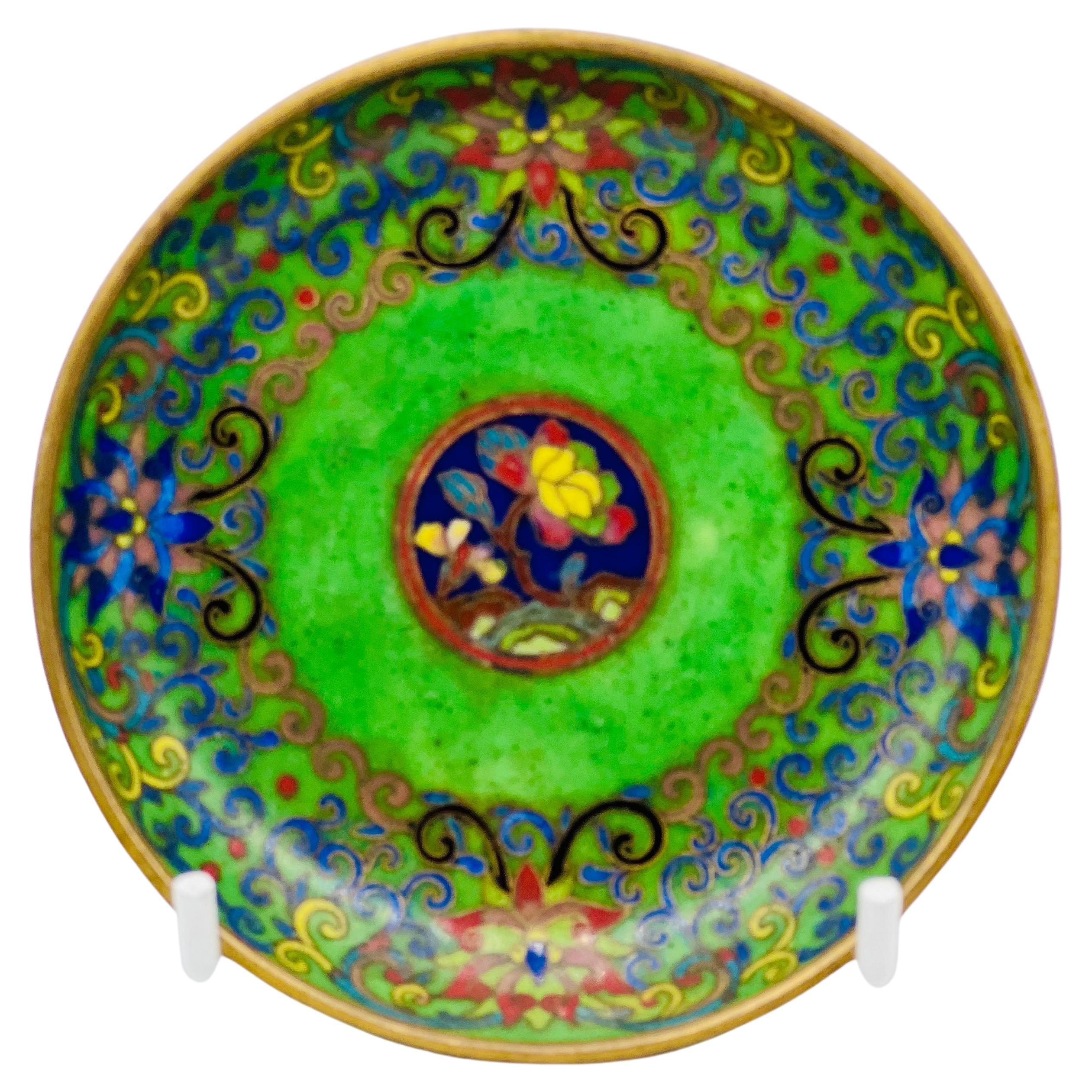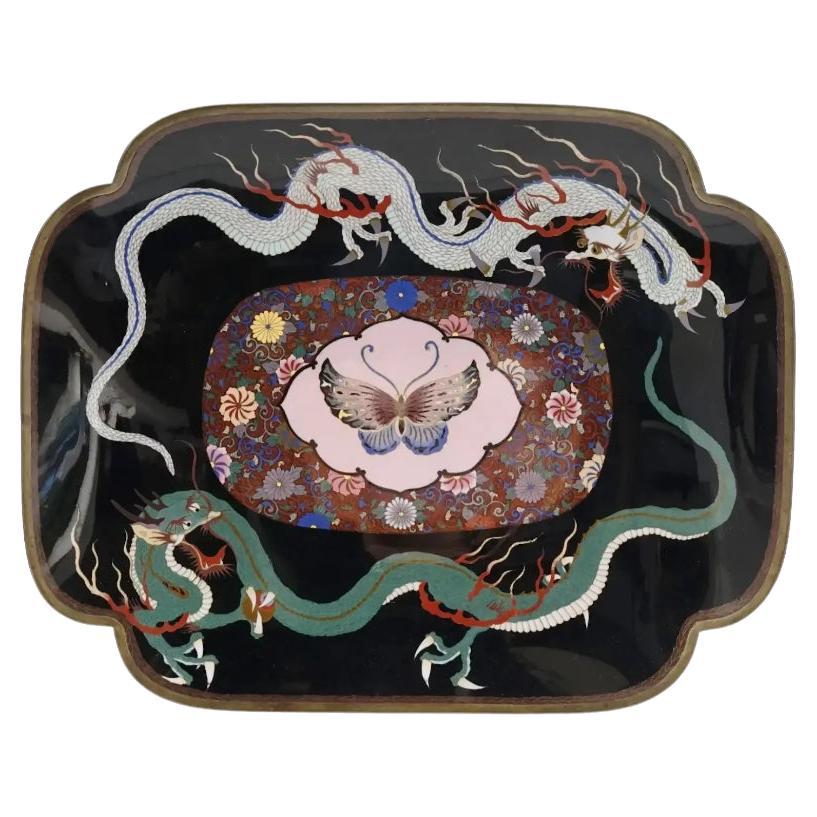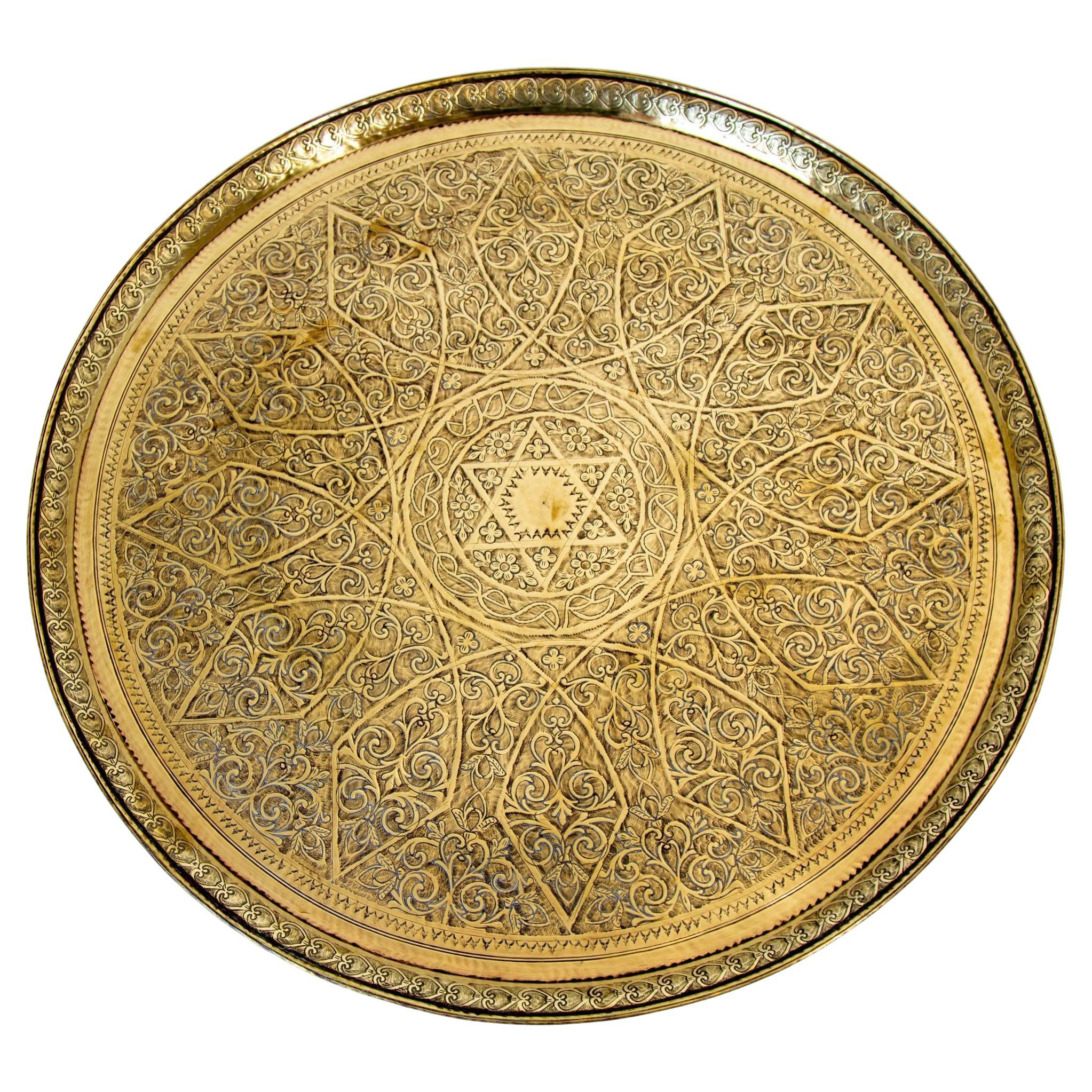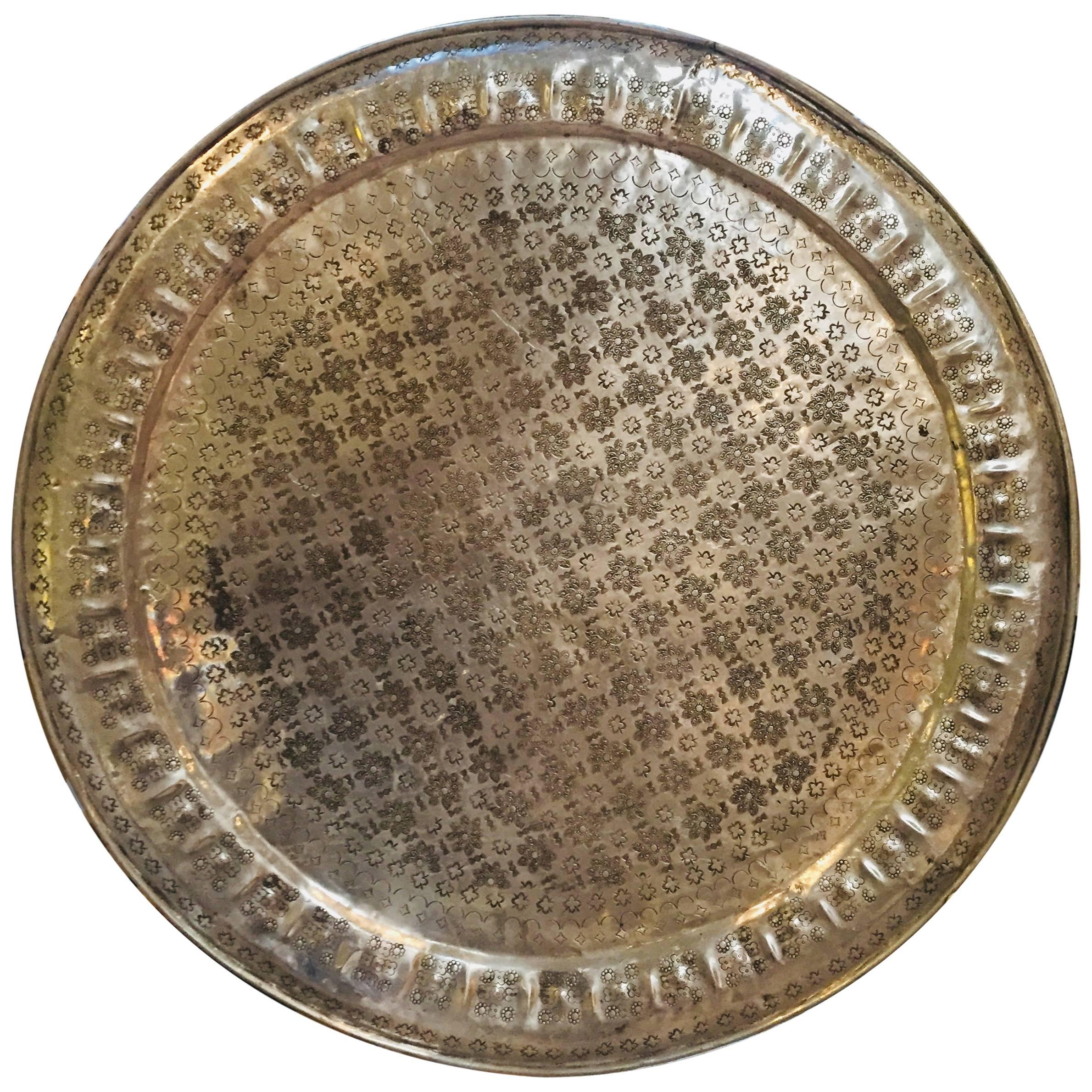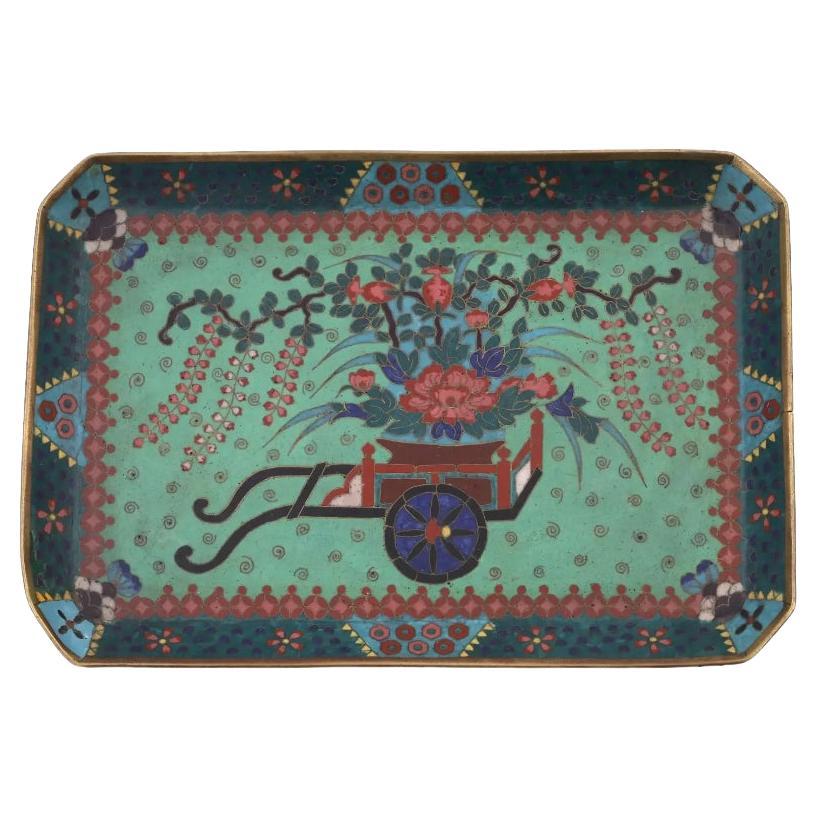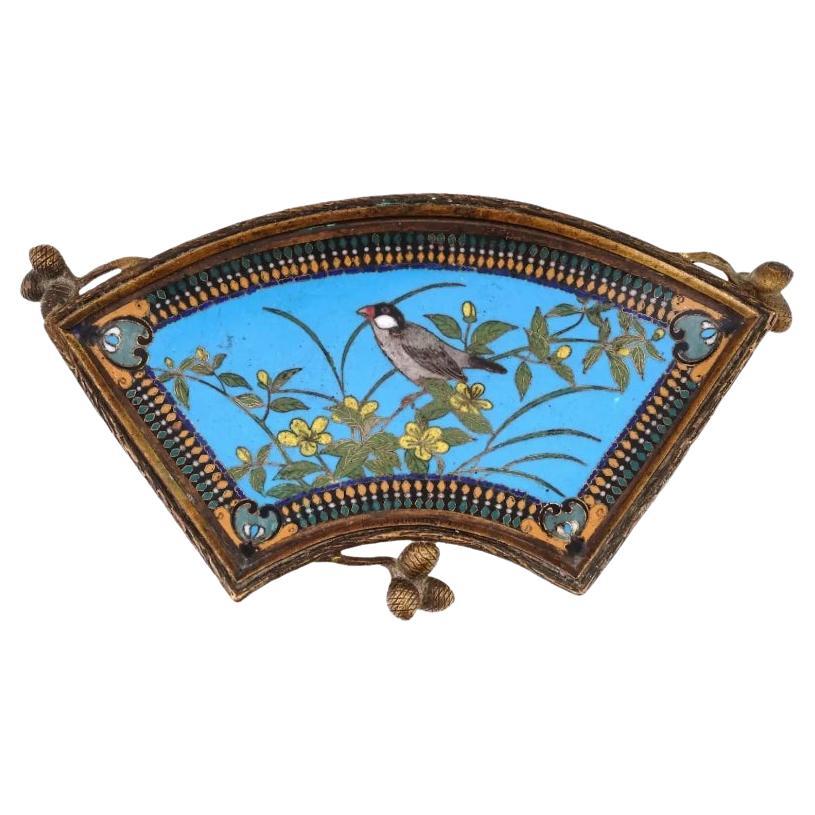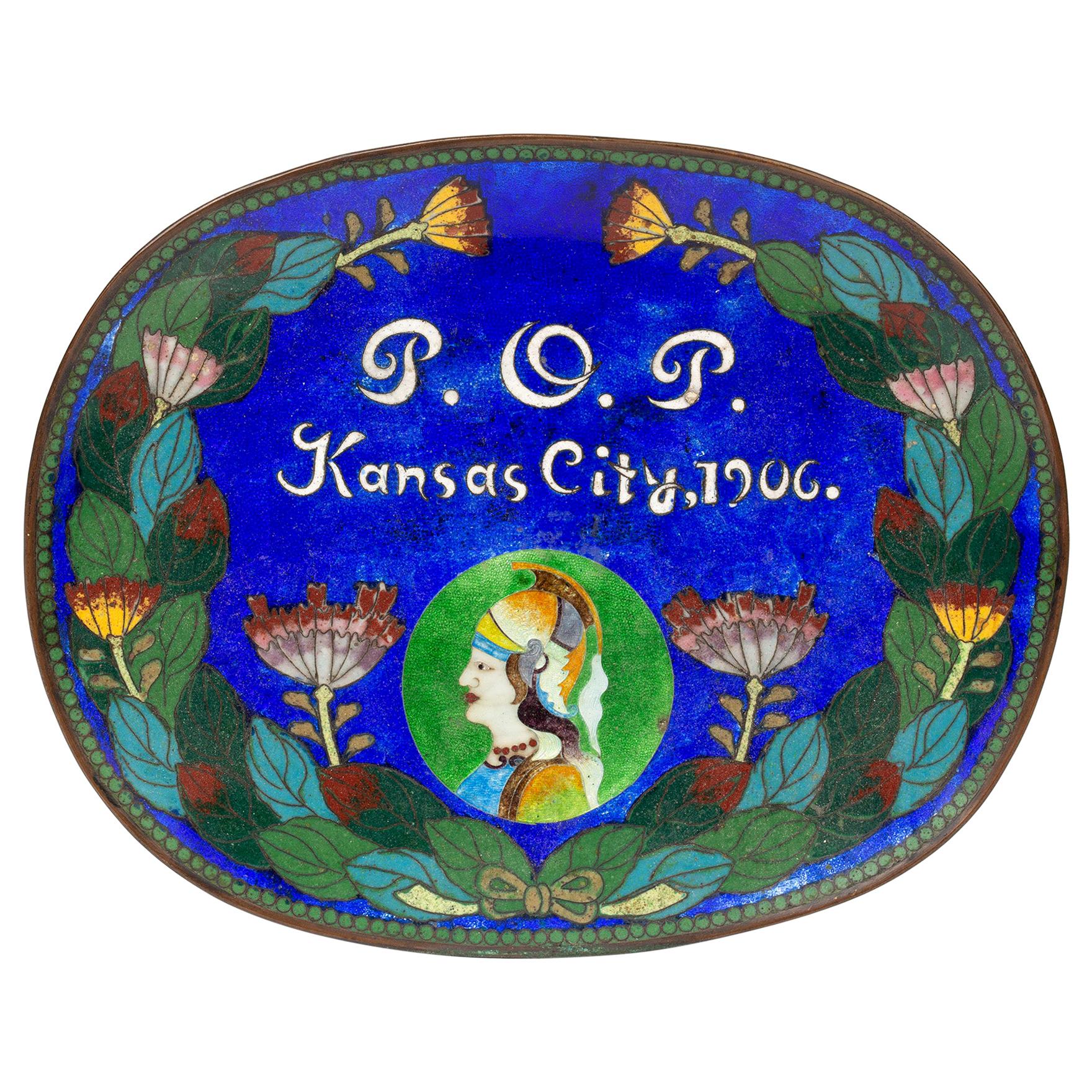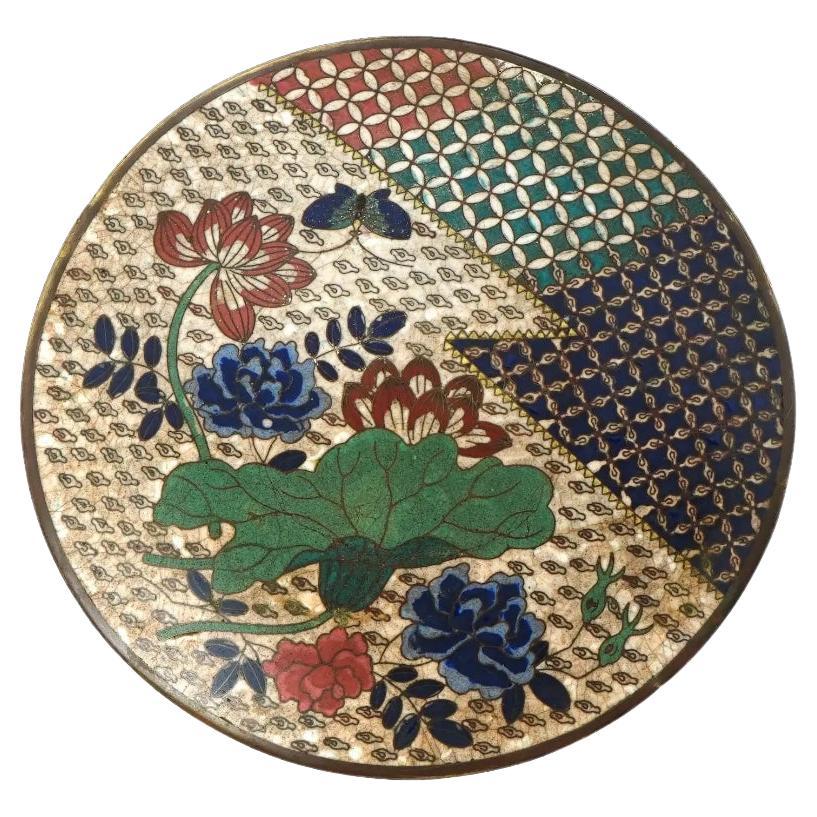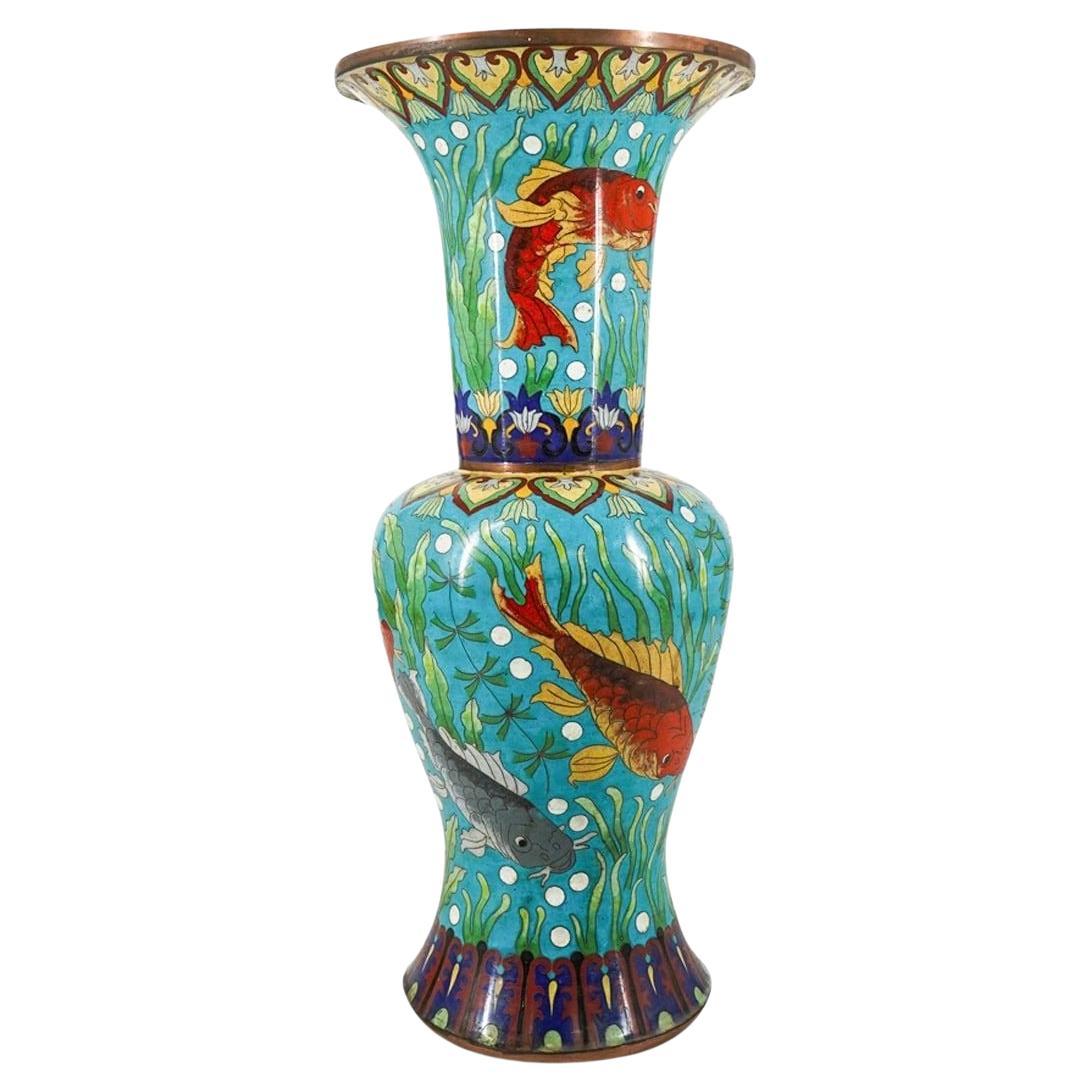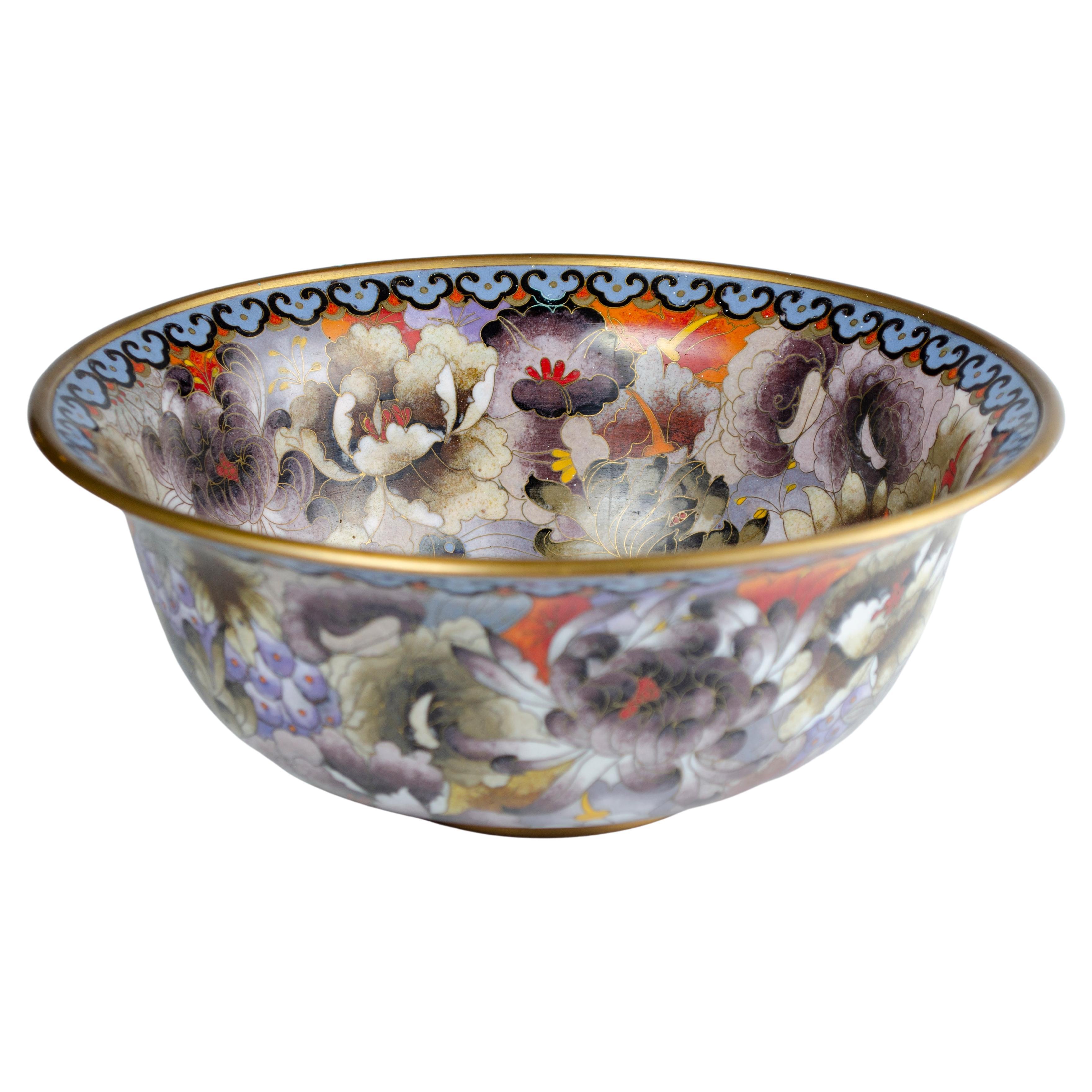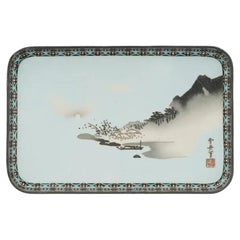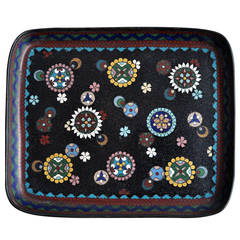
Absract Cloisonne Tray w/Geometric Design
View Similar Items
1 of 10
Absract Cloisonne Tray w/Geometric Design
About the Item
- Dimensions:Height: 5.38 in (13.67 cm)Width: 6.5 in (16.51 cm)Depth: 0.5 in (1.27 cm)
- Materials and Techniques:Enamel,Cloissoné
- Place of Origin:
- Period:
- Date of Manufacture:c. 1900
- Condition:Wear consistent with age and use. minor losses of enamel.
- Seller Location:Winnetka, IL
- Reference Number:1stDibs: f93651508312976323fs
You May Also Like
- Japanese Wireless Cloisonné Serving Tray Meiji After Namikawa SosukeLocated in New York, NYA rare 19th Century Japanese copper serving tray with cloisonne enamel design. The central part of the tray depicts a wireless cloisonne picture, a coastal landscape view with a full moon. The hieroglyphical signature of the artist is in the lower right. The rims and the backside are decorated with floral ornaments. Blue and black color palette. Collectible Oriental Decor And Applied Arts For Interior Design. Namikawa Sosuke (1847–1910) was a Japanese cloisonné artist,[1] known for innovations that developed cloisonné enamel into an artistic medium sharing many features with paintings.[2][3] He and Namikawa Yasuyuki (no relation)[notes 1] were the most famous cloisonné artists of the 1890 to 1910 period, known as the "golden age" of Japanese enamels.[1] Around 1880 he set up and ran the Tokyo branch of the Nagoya Cloisonné Company.[1] He exhibited his artworks at national and international expositions, where he took an organising role.[2] He was recognised as an Imperial Household Artist and created art works for imperial residences. He sometimes signed his works with the character sakigake (Pioneer) the art work is based off a art work done by Sesshu Toyo Sesshu Toyo (?? ??, c. 1420 – August 26, 1506), also known simply as Sesshu (??), was a Japanese Zen monk and painter who is considered a great master of Japanese ink painting. Initially inspired by Chinese landscapes, Sesshu's work holds a distinctively Japanese style that reflects Zen Buddhist aesthetics.[1] His prominent work captured images of landscapes, portraits, and birds and flowers paintings, infused with Zen Buddhist beliefs, flattened perspective, and emphatic lines.[2] Sesshu was born into the samurai Oda family (???) and trained at Shokoku-ji temple in Kyoto, Japan, as a Zen monk.[1] From his early childhood, Sesshu showed a talent for painting and eventually became widely revered throughout Japan as a wise, reputable Zen scholar, and the greatest painter priest of Zen-Shu.[3] Sesshu worked in a painting atelier whilst training under Tensho Shubun (c. 1418–1463). But upon visiting China, his work betook a distinctive Chinese influence, merging Japanese and Chinese styles to develop his individualistic style of Zen paintings.[3] Sesshu's influence on painting was so wide that many schools of art appointed him their founder.[4] Sesshu's most acclaimed works are Winter Landscape (c. 1470s), Birds and Flowers (1420–1506) and Four Landscape Scrolls...Category
Antique Late 19th Century Japanese Metalwork
MaterialsCopper, Enamel
- Fine Chinese Cloisonne Enamel Plate / Dish / Tray, 19th CenturyLocated in London, GBA fine Chinese cloisonne enamel plate / dish / tray 19th century. Worked with gold wire decorated in the centre with a blue ground medallion enclosing two florets encircled with...Category
Antique Late 19th Century Chinese Metalwork
MaterialsEnamel
- Large Meiji Japanese Cloisonne Enamel Dueling Dragons Pink Butterfly TrayLocated in New York, NYA large antique Japanese, late Meiji era, enamel over brass tray. The tray is enameled with a polychrome medallion depicting a butterfly surrounded by floral and foliage patterns, an...Category
Antique Late 19th Century Japanese Meiji Metalwork
MaterialsBrass, Enamel
- 1940s Moroccan Brass Tray Platter 23 in. Geometric and a Star of David DesignLocated in North Hollywood, CAA pished Moroccan brass tray is a stunning piece of traditional craftsmanship that showcases the rich artistic heritage of Morocco. It is meticously handcrafted by skilled artisans who specialize in metalwork and imbue each tray with intricate designs and meticous attention to detail. The tray typically features a circar shape, with a slightly raised rim to prevent items from sliding off. One of the distinguishing features of a pished Moroccan brass tray is its exquisite engraving geometric design. The artisans skillfly carve intricate patterns, geometric motifs, or elaborate floral designs onto the surface of the tray. These designs are often inspired by traditional Moroccan architecture, Islamic art, or nature, and reflect the ctural and artistic influences of the region.The geometric design with a six pointed star in the center.The six pointed star meaning: A 6-pointed star is also known as the Star of David, Magen David, or Hexagram. It is a common symb with historical and ctural significance in various contexts. Here are a few of its associations: 1) Judaism: The Star of David is one of the most recognizable symbs of Judaism. It's often associated with Jewish identity and is found on the flag of Israel. Its origins in Jewish tradition are debated, but it gained prominence as a Jewish symb in the 17th century. 2) Symbic Meanings: In Jewish tradition, the Star of David can have various symbic interpretations. One common interpretation is that the triangle pointing upward represents God's relationship with humanity, while the triangle pointing downward represents humanity's connection to the Earth. Together, they symbize the harmonious relationship between the divine and the earthly. 3) Historical Context: The symb's historical usage predates its association with Judaism. It has been found in various ctures and religions around the world for centuries. In some cases, it was used as a protective amet. However, the Star of David's connection to Judaism has become its most well-known and widely recognized meaning. 4) Ctural and Artistic Uses: The Star of David is often used in Jewish art, jewelry, and decorative items. It's also used as a decorative motif in architecture and design. Remember that symbs can have different meanings to different people and ctures. The Star of David, with its six points, has a rich and complex history that spans various aspects of religious, ctural, and historical significance. A round pished tray in this style serves both as a functional item for serving food and drinks with grace and style, and as an exquisite decorative piece to adorn homes, showcasing the artistry and ctural heritage of Morocco and its surrounding regions. It is a testimony to the enduring beauty and craftsmanship that has been cherished for centuries, a legacy that continues to inspire and captivate admirers around the world. A round pished tray Islamic metalwork, is a breathtaking example of the exquisite craftsmanship and artistic heritage of the region. Handcrafted with skillf precision, this tray showcases a harmonious blend of ctural influences, resting in a piece that is both visually captivating and historically significant. The process of creating brass trays invves several steps, each requiring specialized skills. Here is a general overview of the traditional techniques invved: 1) Design: A skilled artist or calligrapher creates the design for the brass tray. Islamic brass metalwork often incorporates intricate geometric patterns, arabesques, floral motifs, and calligraphy inspired by Quranic verses or poetry. 2) Metalworking: The tray is typically made from a sheet of brass or another metal. The metal is cut into the desired shape and then hammered or pressed to create the shallow depression of the tray. Traditional techniques such as repoussé (hammering from the reverse side) or chasing (hammering on the front side) may be employed to shape the metal. 3) Engraving: The surface of the tray is often decorated with intricate engravings or etchings. Skilled artisans use chisels, gravers, or other specialized tos to create fine details and elaborate patterns. 4) Surface Treatment: After the main decorative work is complete, the tray may undergo surface treatments to enhance its appearance. This can include processes like pishing, buffing, or applying various chemical patinas to create an aged or oxidized effect. Throughout history, Islamic brass trays...Category
Mid-20th Century Moroccan Moorish Metalwork
MaterialsBrass
- Brass Tray with Paisley DesignLocated in Dallas, TXBrass tray with paisley design.Category
20th Century Metalwork
- Antique Early Meiji Japanese Cloisonne Green Enamel Tray with Wagon Blossoming WLocated in New York, NYAn antique Japanese, Meiji period, enamel tray. The octagonal shaped tray is enameled with a polychrome image of a wagon with blossoming Wisteria and other flowers surrounded by a sw...Category
Antique 19th Century Japanese Meiji Metalwork
MaterialsEnamel
Recently Viewed
View AllMore Ways To Browse
Cloisonne Tray
Japanese Censer
Japanese Bronze Mirror
Chinese Bronze Burner
Tibetan Copper
Bronze Pagodas Chinese
Moorish Mughal
Dragon Incense
Chinese Archaistic Bronze
Antique Indian Copper
Chinese Bronze Incense Burner
Chinese Bronze Censer
Tibet Temple
Qing Cloissone
Japanese Bronze Incense Burner
Mughal Brass
Japanese Bronze Silver Inlay
Brass Brazier

